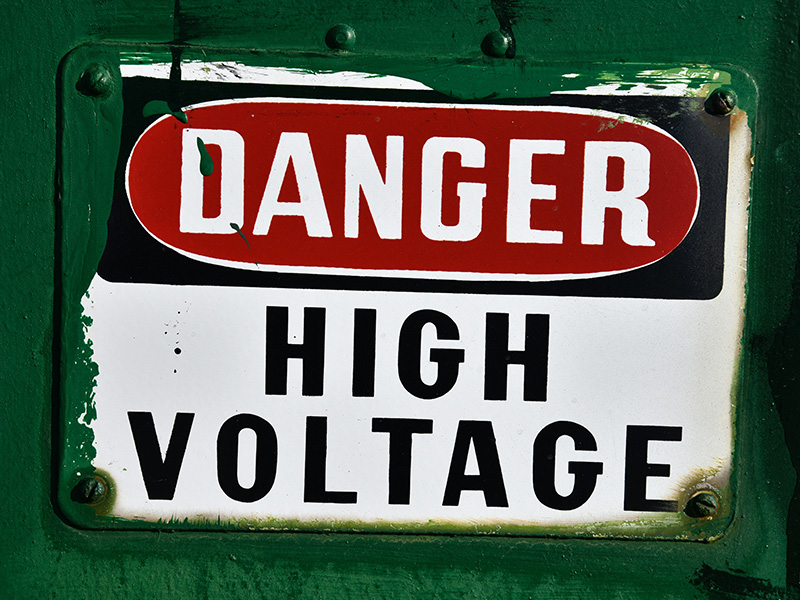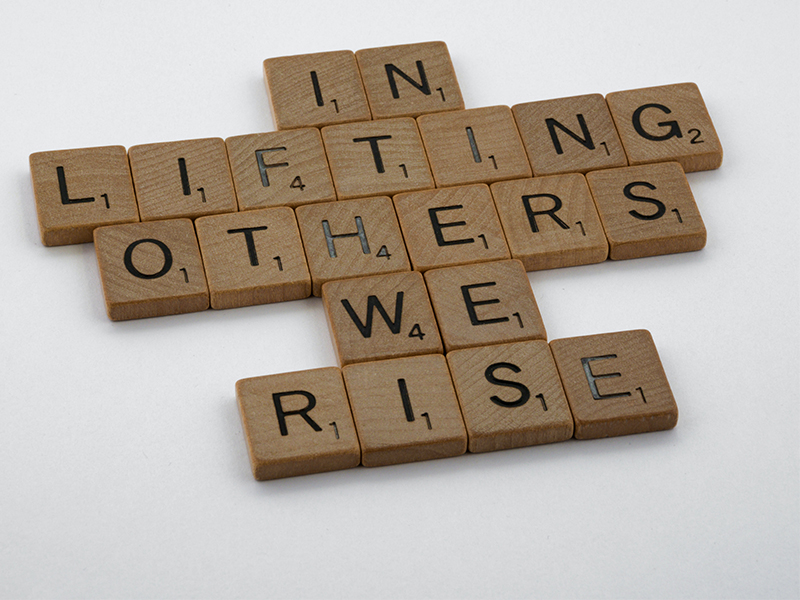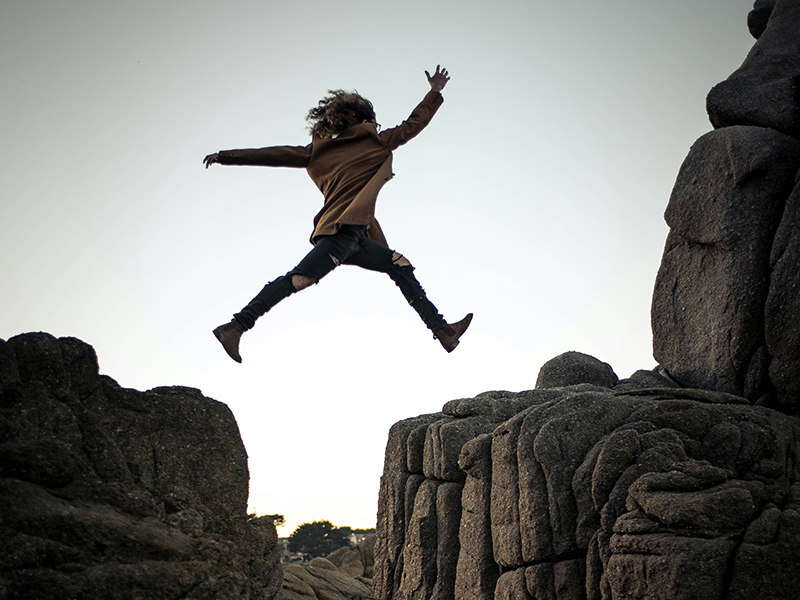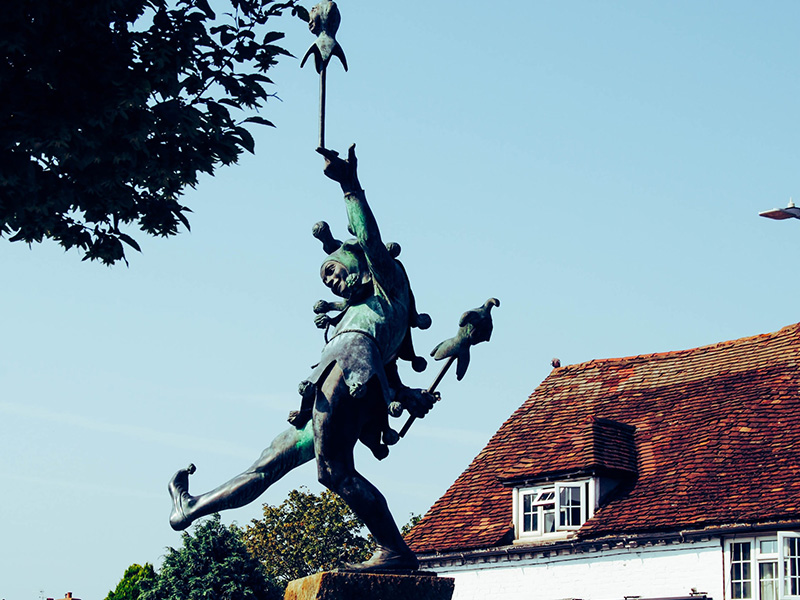
Photo by Ben Hershey, Unsplash
Thank you to all who responded (and continue to respond) to the blog, Ancestor Message: The False Goal of Safety. In this blog we are visiting this topic again, or redux which is something brought back or revived. I like that word. Based on your comments and questions, let’s explore further, deepening and widening the idea that Safety is Not a Goal.
Safety was a literal goal with measures in the corporate utility company where I worked for 18 years. I was lucky enough to help Safety teams develop methods that transformed safety records. Some programs were due to federal government OSHA regulations, but most were based in a direct need to teach and remind Safe Procedures.
What follows are transformative examples that include a transformation of attitude.
Super Macho Electric Crews
On the electric side, the history was one of men risking their lives (and many dying) while electric line was strung across the western United States. Safety was for shmucks.
The answer here was to have the crew that lost a man be the teachers of the safe way to do whatever he was doing when he died or was badly burned or injured. Sometimes the survivor was the teacher. Injury rates dropped dramatically. Competition converted to asking “who has the best safety record?”
Snow Day becomes Training Day
In the gas street area there were many complicated procedures, and in every case a workman about to retire who did it better and faster than anyone else. With the advent of video we were able to use snow days to video these individuals demonstrating their work process (complicated welds, for example). On other snow days the team showed the video to their workmates. Everyone wanted to be better, faster and, almost by default, safer.
Tail Gate Meetings
Safety programs trained that “tail-gate meetings” at the start of the day not only laid out the work to be done, but asked safety questions such as:
- What could go wrong, where is there danger?
- What do we do to make sure we don’t get injured today?
- Which process (procedure, method, or instruction) could we review right now that will help us do this safely?
- When have you done this that everything went really well? What made it so successful?
Seat Belts Example
Seat belts became a requirement for all vehicles at the corporation. The big utility trucks were historically driven by men whose work required strength, minimally, and was quite dangerous (electric, gas, nuclear). The usual bell curve of compliance took place, with the push back of examples of “I know a person who was not wearing a seat belt and got thrown from the car to safety.” For the last holdouts it took a rule that if you were in an accident without a seatbelt you paid for all costs.
Families were encouraged to use seatbelts as well as employees. Our family added seatbelts to our VW bus, and took as a Lenten practice to use them every time we were in the car. It took about eight weeks before our bodies actually preferred the feeling of the seatbelt. At about week ten someone rammed into the front of our car while we were stopped at a red light; we were not injured.
The first time I was in New York city as an adult my friends went through a version of safety questions around choosing transport to and from an event. There were rules: “You are NEVER on the subways after 10 P.M.” Choices were based on mode of transport, speed, and safety: would taking the bus, cab, walking be quicker and safer?
To realize that Safety is not a Goal is to embrace that it must become an embedded part of each process.
Our planet isn’t designed to be safe; at no point does the environment become safer. What safety awareness, education and planning do is wake up the participants to the dangers and what to do about them. The participants do not assume safety, but danger, and make a plan.
Would safety precautions that worked have saved some of those trapped in the Maui fires? Maybe. Safety plans saved all human lives in the Colorado grass fires that destroyed almost one thousand homes in December 2021. The Maui fire was in a valley, not on the plains with multiple exit options. Fires will continue as temperatures rise – what are the safety precautions where you live?

The Good Samaritan, Paula Modersohn-Becker (1876–1907)
Safety and Mercy – The Good Samaritan Story
In the Christian New Testament, Luke (Chapter 10: 25- 37) retells the Good Samaritan story. He most likely learned it from Jesus’ mother Mary. The context for the story is that a lawyer tests Jesus, asking, “Teacher, what shall I do to inherit eternal life.” Jesus asks him, “What’s written in the law? What is your reading of it?” (Jesus is protecting himself from danger by turning the answer back to the lawyer testing him.)
So he answered and said, “ ‘You shall love the Lord your God with all your heart, with all your soul, with all your strength, and with all your mind, and ‘your neighbor as yourself.’ ”
And He said to him, “You have answered rightly; do this and you will live.”
The lawyer “wanting to justify himself,” asks for a definition of neighbor. Jesus answers with The Good Samaritan parable. It begins with a man who discovers the world is not safe.
“A certain man went down from Jerusalem to Jericho, and fell among thieves, who stripped him of his clothing, wounded him, and departed, leaving him half dead.”
Jesus, rather pointedly for the lawyer, has first a priest and then a Levite see the victim but says they “passed by on the other side.” Next comes a certain Samaritan, who is a traditional enemy in Jesus’ time though descended from tribes of Israel and keeping much of Jewish practice. Samaria is now part of Palestine.
“But a certain Samaritan, as he journeyed, came where he was. And when he saw him, he had compassion. So he went to him and bandaged his wounds, pouring on oil and wine; and he set him on his own animal, brought him to an inn, and took care of him.”
A person telling the story often stops at the point the compassionate man tends the wounded man, and takes him to an inn. I really like the next part where the Samaritan must leave but ensures the man’s care. It’s often interpreted as continued kindness, but I think there is room to see that by this act the innkeeper knows he will be returning to check on the situation.
On the next day, when he departed, he took out two denarii, gave them to the innkeeper, and said to him, ‘Take care of him; and whatever more you spend, when I come again, I will repay you.”
Jesus then asks the lawyer which of the three was a neighbor. And the lawyer replies “He who showed mercy on him.” Jesus advises him to “Go and do likewise.” I wish the corporations and their employees would show compassion to their workers. Laws (like OSHA and Civil Rights), lawyers, visiting social workers, teachers and neighbors help ensure what safety they can.
How to Safely Assist Others
And we can “Go and do likewise” if we include safety planning around providing assistance to a stranger. The Good Samaritan provided a place and process for recovery.
How to Be Safe in specific situations involves focusing on gathering information and using it to create and follow a process that puts that information to use.
Here are tips from a recent article, Bystander Intervention Do’s & Don’ts, in the Weekend Read from the American Friends Service Committee. The link will take you to the site, which offers more information and a poster.
The Do’s and Don’ts of Bystander Intervention
DO make your presence as a witness known. If possible, make eye contact with the person being harassed and ask them if they want support. Move yourself near the person being harassed. If you feel you can risk doing so, create distance or a barrier between the person being harassed and the attacker. If it’s safe to do so—and the person being harassed consents—film or record the incident.
DO take cues from the individual being harassed. Is the person engaging with the harasser or not? You can make suggestions, “Would you like to walk with me over here? Move to another train car? For him to leave you alone?,” and then follow their lead. Notice if the person being harassed is resisting in their own way, and honor that. (Especially white folks, don’t police the tone of the person being harassed). Follow up with the individual being harassed after the incident is over, and see if they need anything else.
DO keep both of you safe. Assess your surroundings—are there others nearby you can pull in to support? Working in a team is a good idea, if it is possible. Can you and the person being harassed move to a safer space/place?
DON’T call the police. For many communities experiencing harassment right now (including Arab and Muslim communities, Black people, queer and trans folks, and immigrants) the police can cause a greater danger for the person being harassed.
DON’T escalate the situation. The goal is to get the person being harassed to safety, not to incite further violence from the attacker.
DON’T do nothing. Silence is dangerous—it communicates approval and leaves the victim high and dry. If you find yourself too nervous or afraid to speak out, move closer to the person being harassed to communicate your support with your body.
4Ds: Learn how to Distract, Delegate, Direct, and Delay
Use these practical tips on de-escalating instances of harassment and oppressive interpersonal violence. (Content adapted by AFSC from Abbey Fox, Thought Catalogue, Jes Skolnik, Right to Be (formerly Hollaback), and the People’s Response Team.)
DISTRACT: Distraction is a subtle and creative way to intervene. Distract either the harasser or the target with conversation unrelated to the harassment to derail and de-escalate the situation.
Examples:
- Ask for directions; Spill your drink “accidentally;”
- Pretend you know one of them.
DELEGATE: Bring in a 3rd party to help, possibly someone with more perceived authority.
Examples:
- Alert a store manager, bus driver, club bouncer, or someone else to help intervene.
- Do not call the police unless requested.
DIRECT: Respond directly to the aggressor or physically intervene if necessary. Be confident, assertive, calm.
Examples:
- Walk up to engage a street harasser and directly ask them to stop their behavior.
DELAY: If you can’t intervene in the moment, you can check in with the person being harassed afterwards to see if you can do anything to support them, illustrating that they are not alone.
Examples:
- “Is everything okay? Is there anything I can do?”
- “Is there someone we can call?”
- “Can I buy you a cup of coffee?”
I have been in multiple situations where I wanted to intervene, and I safely have done so in some cases. What is necessary is a clear assessment of the danger and options, and to consider personal defense in case of attack.

Photo by Brett Jordan, Unsplash
Standing Up to Power
Our social world is as dangerous the natural world. We live in a time where our neighbors, or people in meetings we are attending, or strangers in the place where we are may shout at, and harass us or others where we are. They often refuse to cooperate with the authority in charge.
In a recent meeting, the wealthiest person in the room began to pick on the facilitator. She stood up to him and he became menacing. She saw one man stand up and then another, but then they sat down again. She called a security guard into the room. After the meeting ended one of the men came up and said, “I was afraid.” He was afraid both physically and of the damage the person of power could do to him in the organization. But, if both men had stood, and the rest of the room stood with them, the intervention would have been effective.
A friend of mine was at a City Council meeting being disrupted by a similar power pusher. She said, “I’m standing to protest you interrupting this meeting and not allowing it to continue.” She said it again and a third time. And then added, “Any one who agrees please stand now.” Many people in the room stood. The power pusher left in a fury – and the meeting went on after everyone took a deep breath.
Make no mistake – attacks on authority are on purpose and intended to frighten us into silence. Our democracy depends upon us being able to stand with each other in threatening situations. If you are in a situation where someone else stands or defends, please support them.
Next Steps for Us
If we embrace that the world is not safe, we might begin to take safety planning and precautions very seriously. Safety is not provided by adding more police. The place to begin is with ourselves, fixing what is dangerous in our residences, planning safety measures around the places where we go. It begins with enrolling our neighbors in safety planning for both emergencies and daily habits. It is knowing we, with care and thoughtfulness, can tend those who may be wounded by thieves.
Let me be awake and aware and unafraid.
Let me use good judgement in the actions I take.
Let me not be a bystander or walker by.
Let me give aid where it is needed.
Comments are very welcome, either directly to us all on the blog, or to me by email.




